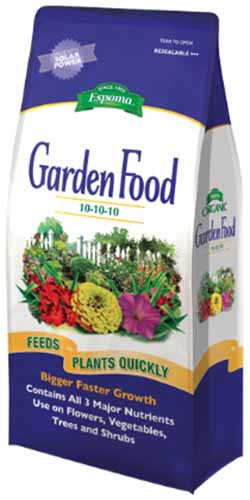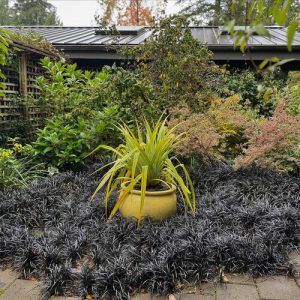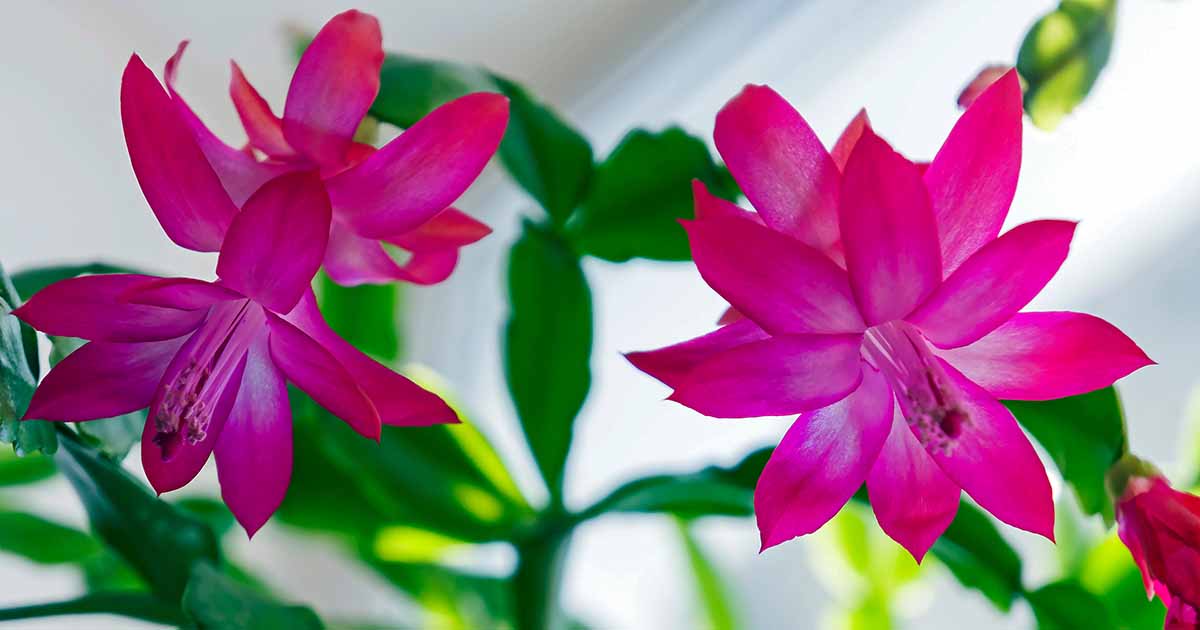
A favorite houseplant for the fall and winter holidays, Christmas cactus (Schlumbergera spp.) is a tropical succulent covered with fiery flowers when the days are shortest – and knowing how to feed these plants is important for an abundant flower display.
Also called zygocactus or holiday cactus, when in full bloom they add fantastic living color to indoor decorations, an ideal plant to brighten the dark days of late fall and winter.
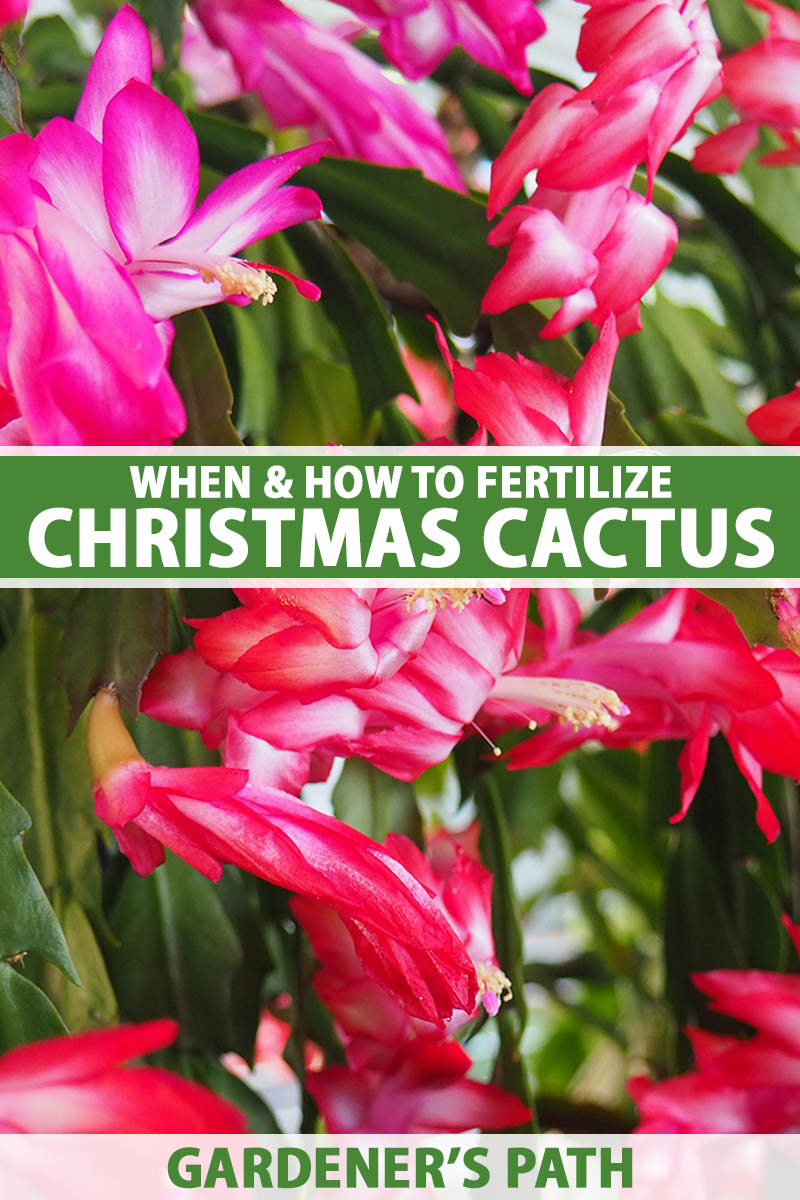
We link to vendors to help you find relevant products. If you buy from one of our links, we may earn a commission.
You can read all about their care and cultivation in our growing guide.
When they come home from the nursery, holiday cactuses are typically loaded with buds and delight us with striking flowers in hot shades of apricot, lilac, orange, pink, scarlet, and white.
And while they’re easy to care for, encouraging them to bloom again can be a bit difficult.
That’s because they have specific requirements to induce bud set and flowering. It’s all about the timing of daylight to dark hours, plus knowing when to fertilize and when to stop feeding.
If you’re ready for a fantastic flowering succulent this winter, let’s unwrap the steps on how to feed a Christmas cactus.
Here’s what I’ll cover:
Holiday Cactus Basics
Christmas and Thanksgiving cacti are epiphytes in the genus Schlumbergera, native to tropical rainforests of Brazil.

Ideal houseplants, they’re easy to care for and thrive in bright, indirect light in well-draining soil with a slightly acidic pH of 5.7 to 6.5, and average moisture.
Bud set occurs during the cooler days of fall when the dark of night lengthens noticeably.
This is because holiday cactus are short day/long night plants. Like chrysanthemums and poinsettias, their photoperiodic response for flowering occurs when day length dwindles to 12 hours or less and temperatures cool off.
If you put your plants outside for part of the growing season, bud set occurs naturally, starting around the middle of September, depending on your region.
Then, when they’re brought in before the first frost, flowering occurs shortly afterwards – mine are always in full bloom for Halloween!
To time your flowering for later in the season, such as between Thanksgiving and Christmas, you may have to manipulate them with a false dormancy.
This is done primarily by artificially reducing daylight hours to eight to 10 hours per day.
If you’d like more info, dig into the easy steps in our guide to encouraging your Christmas cactus to bloom.
Along with light, moisture, and temperature, a steady supply of nutrients is needed to support overall plant health and full flowering.
When and How to Feed
To promote strong, healthy plants with an abundant bud set, fertilize your Christmas cactus during the growing season of spring and summer, or roughly from the start of March to mid-September.
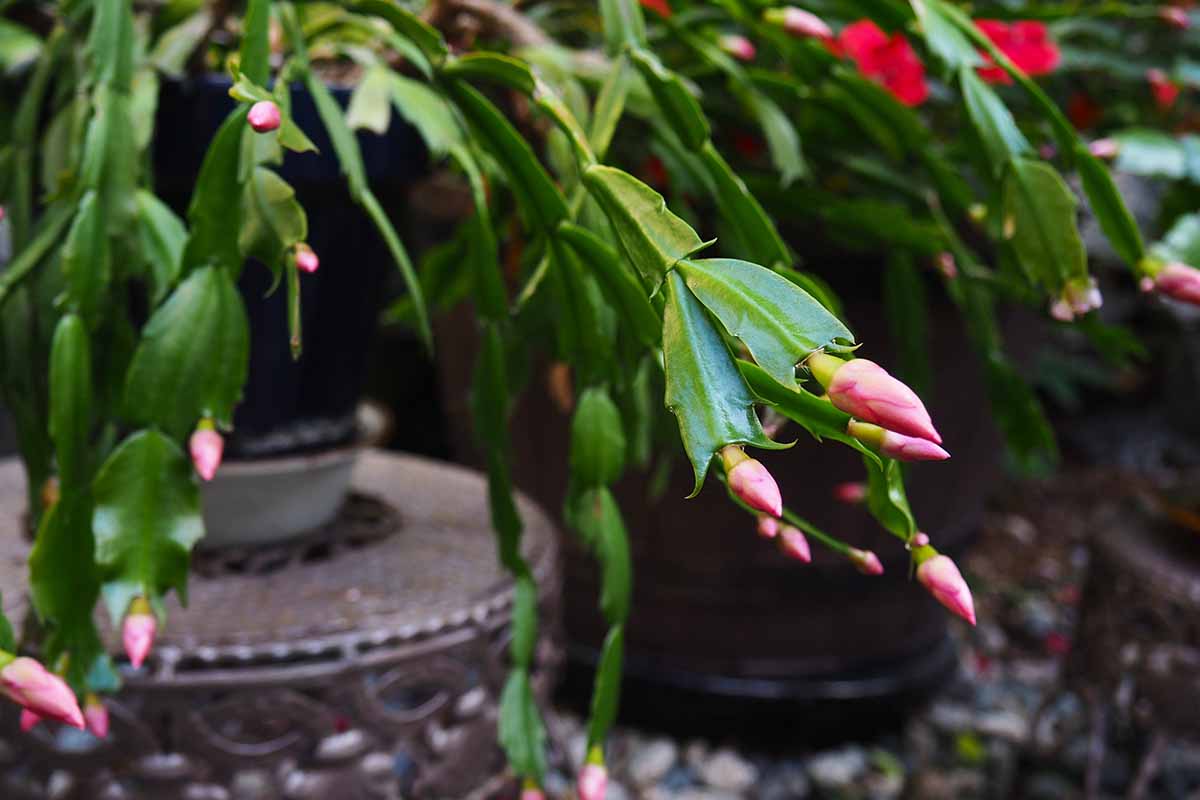
Once the days start to lengthen in early spring and new growth is emerging, this is the time to begin fertilizing your plants.
To meet their nutritional requirements, feed them monthly with a half-strength solution of a balanced liquid formula such as 10-10-10 (NPK).
Experts at the University of Georgia Extension program also suggest supplementing your plants during the growing season with magnesium sulfate, aka Epsom salts – but you’ll need to use a light touch.
Mix only one teaspoon of Epsom salts into one gallon of water and apply monthly.
Alternate feeding with the Epsom salts and balanced fertilizer so they’re applied two weeks apart – avoid applying them at the same time.
Give your plants one final feeding of fertilizer at the end of summer to encourage a vigorous bud set.
If you prefer an easier fertilizing schedule, slow-release pellets with a balanced formula are also effective and can be applied in early spring then again in midsummer for a final bud-set boost.
Espoma Garden Food 10-10-10 (NPK) is a suitable option, and it’s available from Nature Hills.
Or, for a simple and natural plant food, you can side and top dress your plants with nutrient-rich compost or worm castings – they provide all the macro and micronutrients needed for optimal plant health.
Depending on the size of your Christmas cactus and the pot it’s growing in, gently work in one to two inches of compost or castings in early spring and again in midsummer.
Once the buds appear, withhold feeding until winter is over. The plants aren’t actively growing at this time and need a dormant period to rest and re-energize for another flowering season.
Leach the Soil
Regular fertilization can cause a buildup of mineral salts in the soil and this can cause damage to your plants’ roots. Leaching the soil can help prevent this.
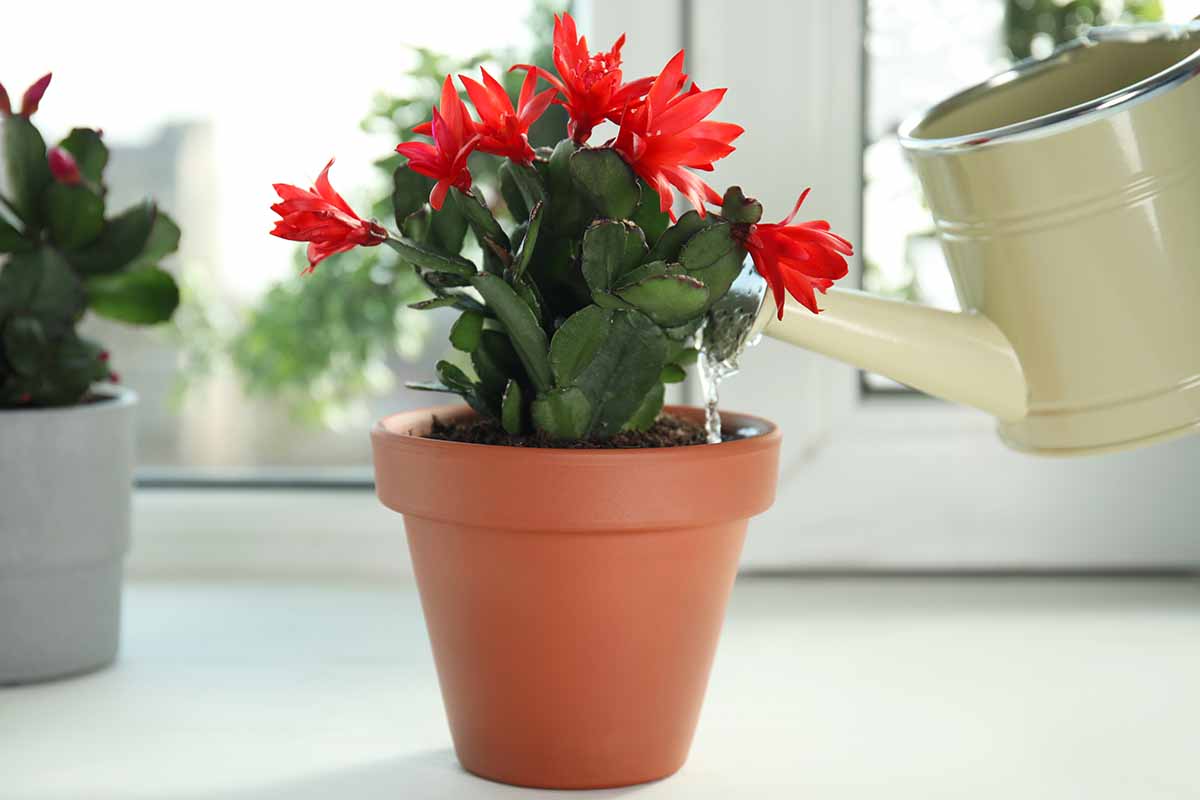
Leach the soil after your plant has finished flowering by placing the pot in a sink or bucket and watering normally, using the same amount of water as you would during the growing season.
To avoid adding more minerals to the mix, use distilled, filtered, or rainwater if possible.
Wait five minutes to allow the salts in the soil to dissolve, then re-water, once again using the same amount of water as you would in your regular applications.

The second application should cause water containing the dissolved salts to flow from the bottom of the container, cleansing the soil and reinvigorating your plants. Discard the expelled water.
Growing Tips
Along with a regular feeding schedule, the following tips help to produce strong, vibrant plants with ample flowers:
- In spring and summer, allow the top inch of soil to dry out between water applications.
- Once buds have set in fall, increase watering slightly to keep the soil lightly moist – bud drop occurs if the soil is too dry.
- Keep your plants slightly root bound in containers, and ensure well-draining soil.
- Always empty the water out of catchment saucers so your plant doesn’t sit in standing water.
- If your air is dry in winter, mist your plants lightly with water on a weekly basis to increase humidity.
- Keep your Christmas cactus away from direct heat sources, such as a fireplace, heating vent, and strong sunlight.
Blooming Beautiful!
For blooming beautiful holiday cacti, they need to be fertilized regularly!
Use a balanced liquid or slow-release formula to provide all the necessary macro and micronutrients, or use a natural fertilizer like compost or worm castings – and fertilize only during the active growing season.
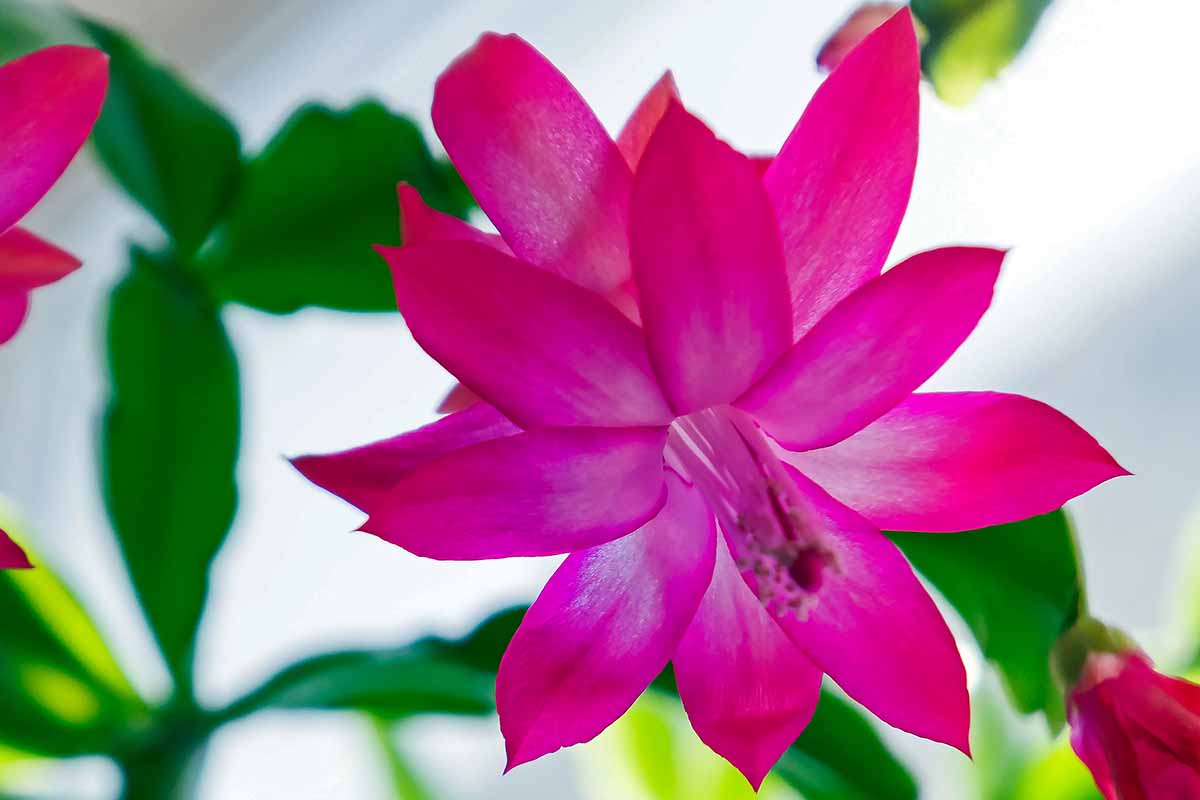
Once flowering stops, remember to leach the soil of undissolved mineral salts for strong plants and overall good health.
How do you feed your Christmas cactus? Tell us in the comments section below.
And for more information about growing holiday cacti, add these guides to your reading list next:
